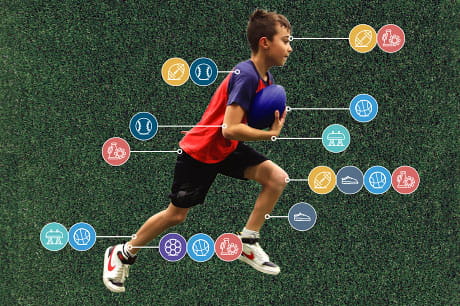Don’t let spring fever turn into spring injuries
When the weather warms, it’s hard not to go outside. Here’s how to avoid getting injured.
The warm and sunny weather that comes with spring is a relief after months of cold and snow. And while using the warm weather as motivation to move and get healthy is great, doing too much too soon isn’t.
“When it gets warm, people start running outside, which can lead to a slip and fall, a twisted ankle and other injuries if they aren’t careful,” says Brian Jacobs, DO, sports medicine physician at Geisinger.
Beware of common overuse injuries
Some of the common overuse injuries seen this time of the year include overuse injuries like runner’s knee, Achilles tendinitis and ankle sprains. Getting outside to play catch can also lead to an injury because throwing a baseball for the first time in a while can lead to rotator cuff strains.
“If you've been less active throughout the winter, your body needs a little time to readjust itself to intense activity. It’s important to start slowly when you’re getting back into it. If you haven’t exercised in a few months, your mind may remember what it feels like to exercise, but your body may not. Most injuries come from trying to do too much too soon,” says Dr. Jacobs.
Similarly, injuries can stem from not taking proper steps to make sure your body is warm before working out.
Make sure you warm up, too
“You should take it easy at the beginning and warm up before your workout. Don’t go from zero or light levels of exercise to a high level of intense workout without first allowing your body to warm up and get used to the increased exercise loads,” says Dr. Jacobs.
If running outdoors is your exercise of choice when the seasons change, remember to take it easy, especially if you haven’t done it in a while.
“Don’t try and lace up your running shoes and hit the pavement with the goal of running several miles. You’re better off slowly increasing your running distance over a few days or weeks to avoid injury,” says Dr. Jacobs.
How to treat an injury at home
Unfortunately, even if you take the time to warm up and work back up to the fitness regimen due to the spring weather, injuries can still happen.
“If you feel any pain more than mild soreness, that’s a sign you have an injury that you shouldn’t ignore,” says Dr. Jacobs. The good news? Most of these injuries aren’t serious and don’t cause permanent damage.
If you think you have an injury, follow the RICE method:
- R – Rest the injury for 48 hours
- I – Apply ice for 20 minutes at a time, 4 to 8 times a day
- C – Compress the injury to reduce swelling
- E – Elevate the injured limb about 8 inches above your heart
You can also try age- or weight-based over-the-counter medications like ibuprofen, naproxen or acetaminophen. (But not if they’d interact with your current medications or you have health conditions that make them unsafe for you.)
Rest doesn’t mean you can’t exercise at all, though. Focus your efforts on stretching and core strengthening exercises while giving your injury a break.
“If your pain doesn’t go away after two weeks, you should see your doctor,” says Dr. Jacobs. “They’ll help you find a diagnosis and work with you to create a treatment plan and an exercise plan you can safely follow while you heal.”
Next steps:
Meet Brian Jacobs, DO
Find a sports medicine specialist
Ready to start working out again? Start slowly.





